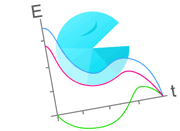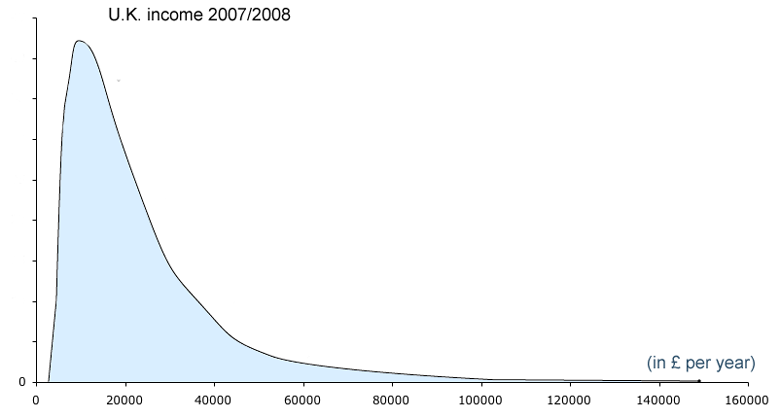 |
 |
The reason why the arithmetic mean and standard deviation are so prevalent in statistics is that, being the result of a mathematical calculation, further calculations, such as significance, can be performed using them. But if the distribution concerned is heavily skewed, they are not good indicators of typical values.
There is an instinctive belief that the arithmetic mean is somehow "more accurate" because it is the result of a calculation and can be quoted to a number of decimal places. The term "accurate" is misleading though: we are looking for something that is truly representative, and that means a value judgement has to be made. If a distribution is balanced, the mean and median are close to each other, and either are appropriate. If not, then the median gives you a better idea of a typical value, whereas the mean would be appropriate when it would be wrong to exclude rarer high or low scores (e.g. working out a sporting average).The same is true of using the quartiles or the standard deviation as a measure of spread. In general, the median and quartiles for a general description, and the mean and standard deviation are best reserved for use where further calculations are necessary.
Why is all of this relevant to our discussion? Simply because much of the data in the PACE trial, and in other studies of ME/CFS, is skewed, so great care must be taken to ensure that values quoted are truly representational and not deceptively large.
When the Chalder Fatigue Scale was used for people with ME/CFS in the PACE trial, the scores were heavily weighted towards the bottom/very fatigued end, and so are heavily skewed. There are several ways to measure how skewed a distribution is; in fact the Chalder Scale turns out to be as skewed as the income distribution above. Using the mean and standard deviation to describe those results could not be described as giving a good indication of typical results. The use of medians and quartiles (or even key percentiles as the Office of National Statistics does) would have given a much more realistic idea. It is likely that the distribution of improvements in each of the other measures used in the PACE trial is similarly skewed: just as very high earners boosted the mean income, a smaller proportion of patients who showed great improvement would have had a disproportionate effect and would have boosted each mean score.
For a fuller explanation of the relevance to measures of fatigue and physical functioning in patients with ME, and an explanation of how the use of the standard deviation is deceptive, please click on the further details link below.
|
 |
 |




